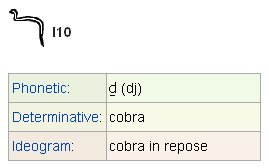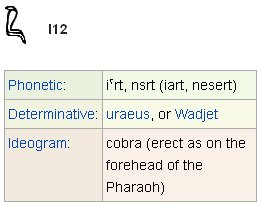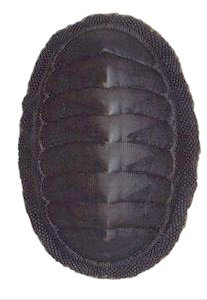Based on my perception that the letters of the Phoenician alphabet may have corresponded to the right ascension positions of leading stars, we might get some help from this idea when deciphering the Easter Island texts (those on the rongorongo tablets and in Manuscript E).
There were 2 sets of Phoenician letters, the first one ending with a Whip (Lamed) and the second ending with Tav (Counting). 12 + 10 = 22. From G (Alhena) to L (Khambalia) - both in the first set - there were 12 - 3 = 9 letters. Or if counting 'complementarily': 22 - 9 = 13. Ain Al Rami (*286.2), the Eye of Sagittarius, has been given the Greek letter ν, corresponding to the 2nd Phoenician letter counted from Lamed. → Nun (Fish) → Nunki (*288.4 → 263.0 = 288.4 - 41.4 + 16). ... This [σ Sagittarii] has been identified with Nunki of the Euphratean Tablet of the Thirty Stars, the Star of the Proclamation of the Sea, this Sea being the quarter occupied by Aquarius, Capricornus, Delphinus, Pisces, and Pisces Australis. It is the same space in the sky that Aratos designated as Water ...
As for Mira (*33.7) in Cetus it has been given the letter ο = Ayin in Phoenician:
The distance from the Eye of the Archer to Mira ought to be 365¼ - 286.2 + 33.7 = 79.05 + 33.7 = 112¾ = 296 - 183. First came 79 days in order to reach the equinox and then 34 in order to reach Mira. An eye needs to blink, and the astronomically correct date for the northern spring equinox was day number 79 (March 20).
When counting years (tau), The Malay word for 'year' is taun or tahun. In all Polynesian dialects the primary sense is 'a season', 'a period of time'. In the Samoan group tau or tausanga, besides the primary sense of season, has the definite meaning of 'a period of six months', and conventionally that of 'a year', as on the island of Tonga. Here the word has the further sense of 'the produce of the year', and derivatively 'a year'. In the Society group it simply means 'season'. In the Hawaiian group, when not applied to the summer season, the word keeps its original sense of 'an indefinite period of time', 'a life-time, an age', and is never applied to the year: its duration may be more or less than a year, according to circumstances. So far our authority (Fornander, I, 124; cp. 119). It seems however to be questionable whether the original sense is not the concrete 'produce of the seasons', rather than the abstract 'period of time'. It is significant that on the Society Islands the bread-fruit season is called te tau, and the names of the other two seasons, te tau miti rahi and te tau poai, are formed by adding to this name. Nilsson. we should remember that there was no year between 1 AD and 1 BC. Anciently number 0 did not exist. Although this appears strange at first it makes sense because it will then be more easy to count number of years from a position in AD to a position in BC. The missing year zero - corresponding to the birth year of Christ - could not be documented. Later, after zero had been integrated with the natural numbers, the Mayas used a closed bivalve shell (surely with a living being inside) for zero.
Rongorongo glyphs which could depict zero:
Likewise could not day zero in a year be documented. There is no digit 0 on the face of the clock - for this place is hidden (puo) by the end of the preceding cycle = 12. Or by 10: ... And then she looked in her hand, she inspected it right away, but the bone's saliva wasn't in her hand. It is just a sign I have given you, my saliva, my spittle. This, my head, has nothing on it - just bone, nothing of meat. It's just the same with the head of a great lord: it's just the flesh that makes his face look good. And when he dies, people get frightened by his bones. After that, his son is like his saliva, his spittle, in his being, whether it be the son of a lord or the son of a craftsman, an orator. The father does not disappear, but goes on being fulfilled. Neither dimmed nor destroyed is the face of a lord, a warrior, craftsman, an orator. Rather, he will leave his daughters and sons. So it is that I have done likewise through you. Now go up there on the face of the earth; you will not die. Keep the word. So be it, said the head of One and Seven Hunaphu - they were of one mind when they did it ...
Time flows on and not until its measures have been completed in full can there be notches (nights) carved into the wood.
... In the Hindu Bakshali Manuscript a dark new moon face was used for the unknown (our X) → what is inside an egg cannot be seen, the contents of the coming month were uncertain ...
|
|||||||||||||||||||||||||||||||||||||||||||||||||||||||||||||||||||||||











